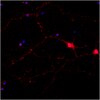507861 Sigma-AldrichPANSORBIN® Cells, Standardized
Recommended Products
概述
| Replacement Information |
|---|
价格及供货情况
| 产品目录编号 | 库存情况 | 包装 | 数量 / 包装 | 价格 | 数量 | |
|---|---|---|---|---|---|---|
| 507861-25MLCN |
|
塑胶安瓿;塑胶针药瓶 | 25 ml |
|
— | |
| 507861-50MLCN |
|
塑胶安瓿;塑胶针药瓶 | 50 ml |
|
— |
| Product Information | |
|---|---|
| Activity | Binding capacity: ≥2 mg/ml |
| Form | Liquid |
| Formulation | Supplied as a ≥10% (w/v) Staphylococcus aureus cell suspension in PBS, 0.1% sodium azide, pH 7.2. |
| Preservative | 0.1% sodium azide |
| Quality Level | MQ100 |
| Applications | |
|---|---|
| Key Applications | Immunoprecipitation |
| Application Notes | Most common applications include immunoprecipitation and mitogenic stimulation of B lymphocytes. |
| Biological Information |
|---|
| Physicochemical Information |
|---|
| Dimensions |
|---|
| Materials Information |
|---|
| Toxicological Information |
|---|
| Safety Information according to GHS |
|---|
| Safety Information |
|---|
| Product Usage Statements |
|---|
| Storage and Shipping Information | |
|---|---|
| Ship Code | Ambient Temperature Only |
| Toxicity | Standard Handling |
| Storage | +2°C to +8°C |
| Do not freeze | Yes |
| Packaging Information |
|---|
| Transport Information |
|---|
| Supplemental Information |
|---|
| Specifications |
|---|
| Global Trade Item Number | |
|---|---|
| 产品目录编号 | GTIN |
| 507861-25MLCN | 04055977271959 |
| 507861-50MLCN | 04055977271966 |
Documentation
PANSORBIN® Cells, Standardized MSDS
| 职位 |
|---|
PANSORBIN® Cells, Standardized 分析证书
| 标题 | 批号 |
|---|---|
| 507861 |
参考
| 参考信息概述 |
|---|
| Kierszenbaum, F., et al. 1991. Immunology 74, 317. Meikle, P.J., et al. 1991. J. Biol. Chem. 266, 22569. Ezaki, O., et al. 1989. Biochem. Biophys. Res. Commun. 159, 1368. Murakami, H., et al. 1988. Biochem. J. 256, 917. Kessler, S.W. 1975. J. Immunol. 115, 1617. |
引用
| 标题 | |
|---|---|
|
|
| 数据表 | ||||||||||||||||||||||||||
|---|---|---|---|---|---|---|---|---|---|---|---|---|---|---|---|---|---|---|---|---|---|---|---|---|---|---|
|
Note that this data sheet is not lot-specific and is representative of the current specifications for this product. Please consult the vial label and the certificate of analysis for information on specific lots. Also note that shipping conditions may differ from storage conditions.
|












